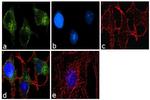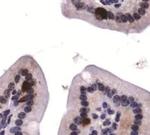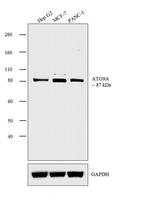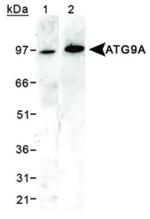Search Thermo Fisher Scientific
图: 1 / 4
ATG9A Antibody (PA1-16993) in ICC/IF




产品信息
PA1-16993
种属反应
宿主/亚型
分类
类型
抗原
偶联物
形式
浓度
纯化类型
保存液
内含物
保存条件
运输条件
RRID
靶标信息
Macroautophagy is the major inducible pathway for the general turnover of cytoplasmic constituents in eukaryotic cells, it is also responsible for the degradation of active cytoplasmic enzymes and organelles during nutrient starvation. Macroautophagy involves the formation of double-membrane bound autophagosomes which enclose the cytoplasmic constituent targeted for degradation in a membrane bound structure, which then fuse with the lysosome (or vacuole) releasing a single-membrane bound autophagic bodies which are then degraded within the lysosome (or vacuole). Apg9 plays a direct role in the formation of the cytoplasm to vacuole targeting and autophagic vesicles, possibly serving as a marker for a specialized compartment essential for these vesicle-mediated alternative targeting pathways.
仅用于科研。不用于诊断过程。未经明确授权不得转售。
篇参考文献 (0)
生物信息学
蛋白别名: Apg9; APG9 autophagy 9-like 1; APG9-like 1; Apg911; APG9A; ATG 9A; ATG9 autophagy related 9 homolog A; autophagy 9-like 1 protein; Autophagy protein 9; autophagy-related 9-like 1; autophagy-related 9A; Autophagy-related protein 9A; FLJ22169; mATG9
基因别名: APG9L1; ATG9; ATG9A; Atg9l1; AU019532; mATG9; MGD3208; RGD1310450
UniProt ID: (Human) Q7Z3C6, (Bovine) Q3T904, (Mouse) Q68FE2, (Rat) Q5FWU3
Entrez Gene ID: (Human) 79065, (Chicken) 425722, (Bovine) 540482, (Mouse) 245860, (Rat) 363254



